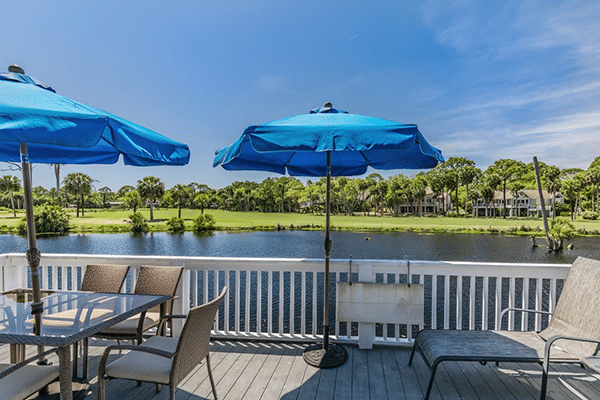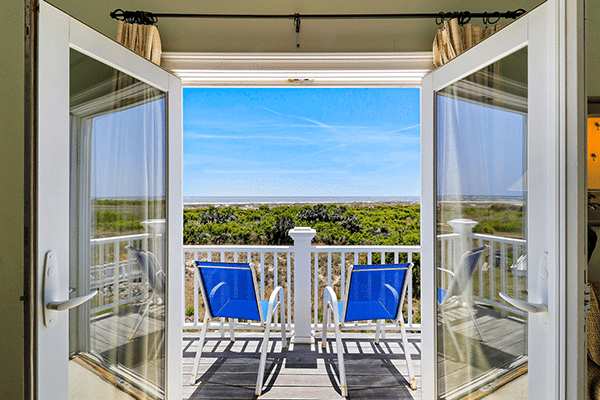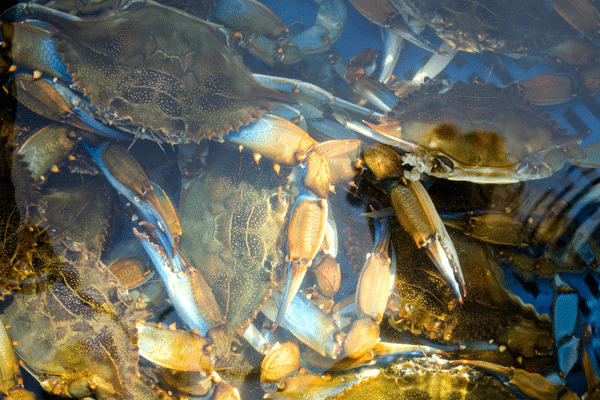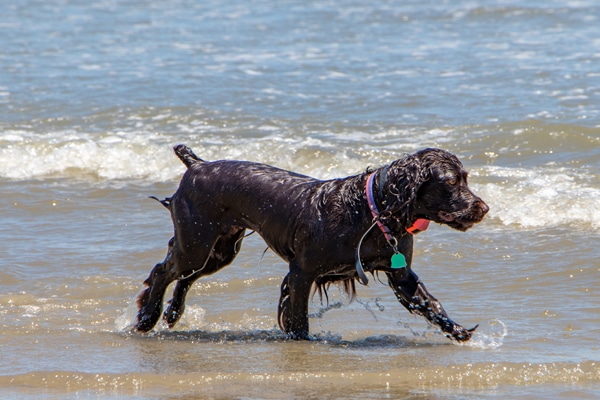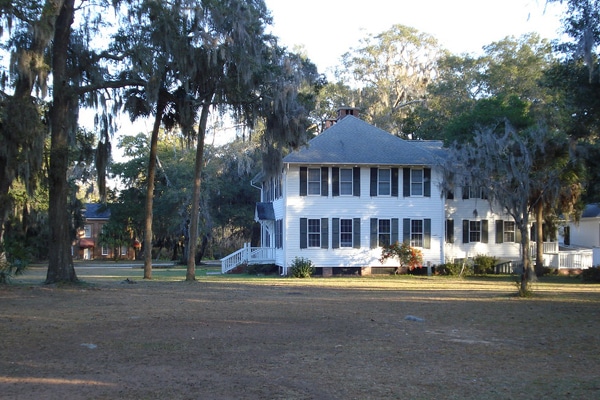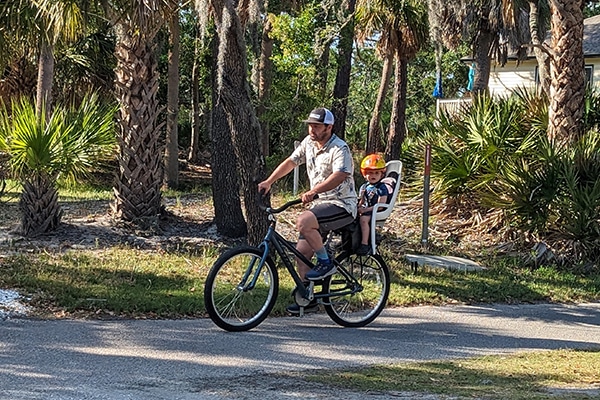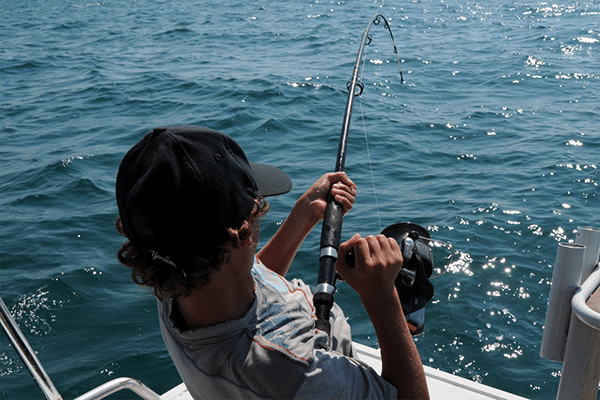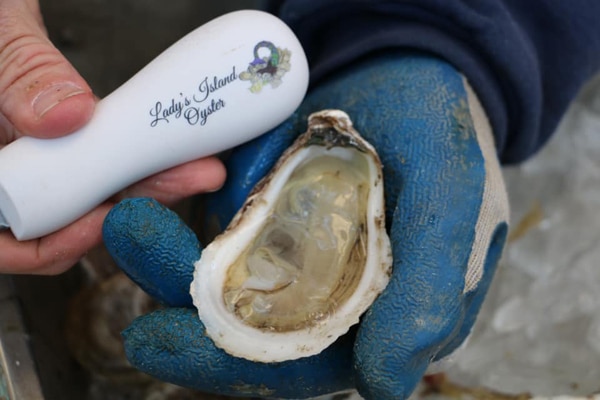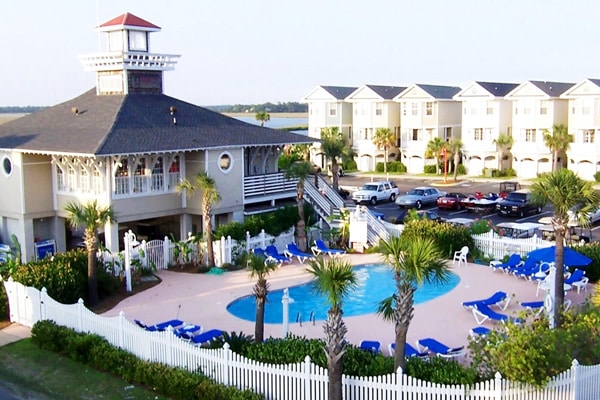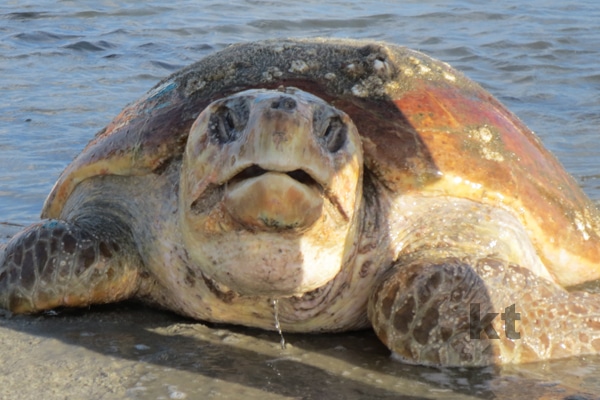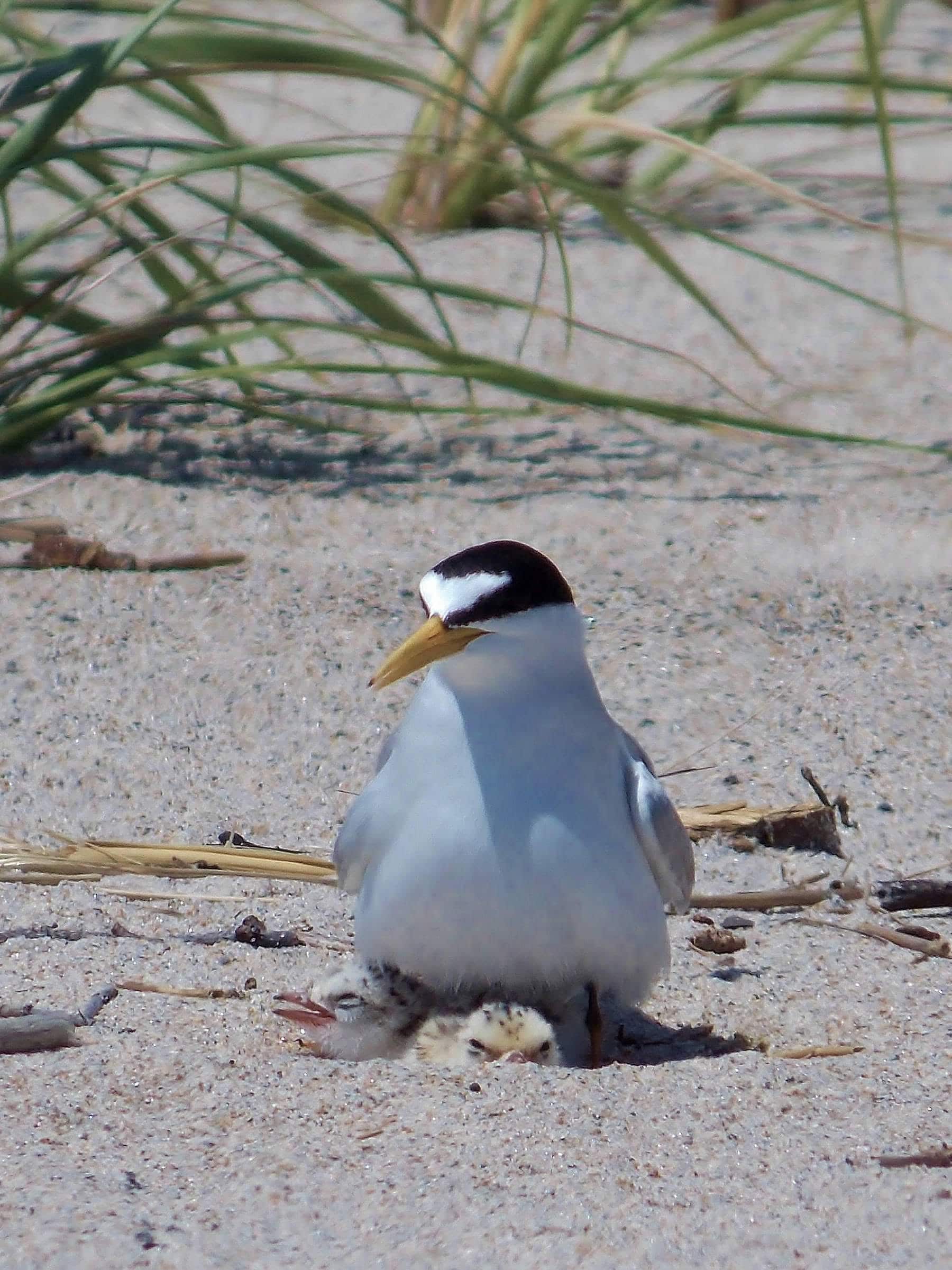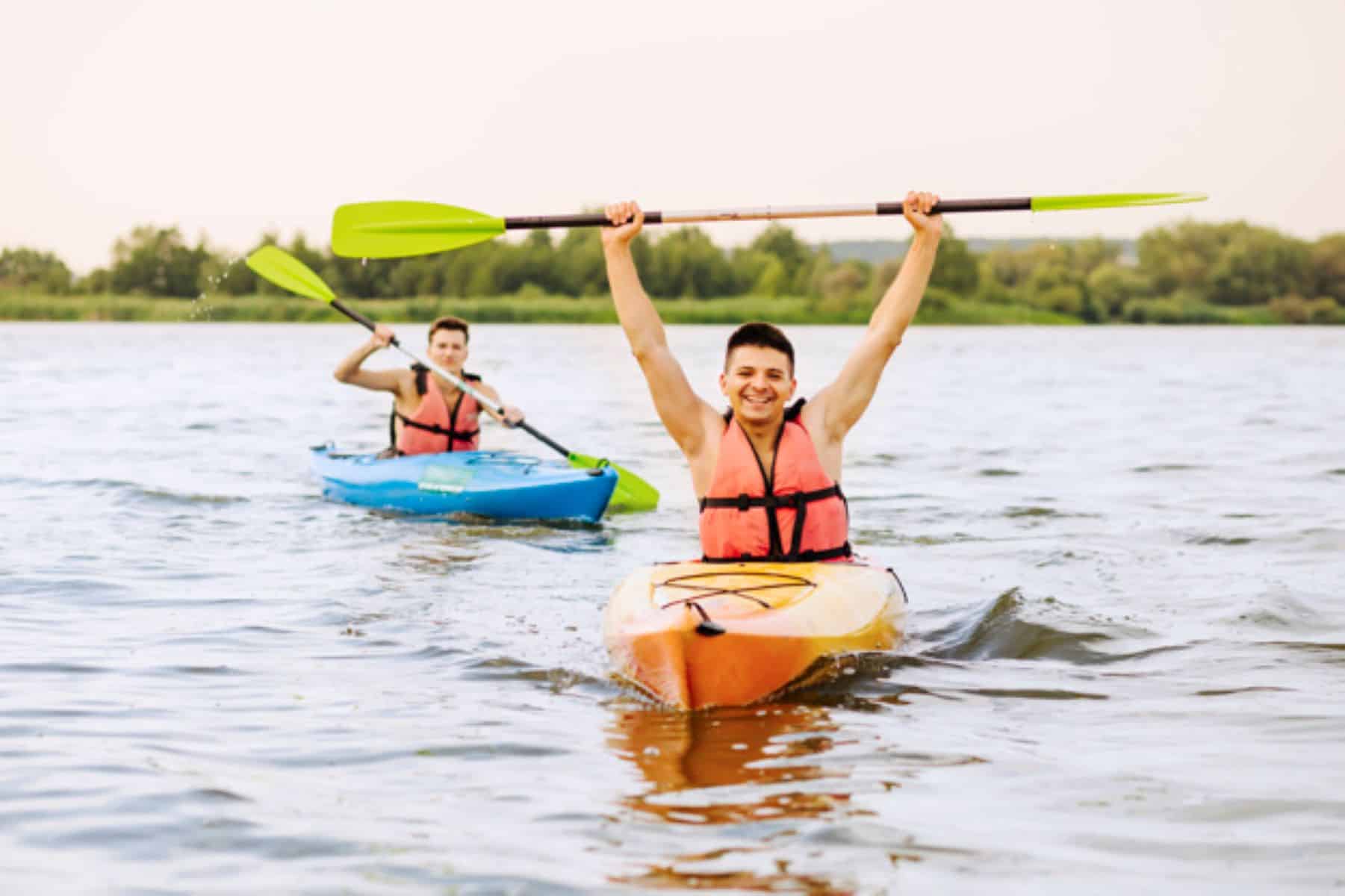Amazing Uninhabited Island
Pritchards Island is just southwest of Fripp and is only accessible by boat. This uninhabited island is owned by the University of South Carolina which conducts research on the island and welcomes daily visitors who enjoy strolling along the beaches and enjoying the barrier island's wildlife and tranquility.
Atlanta businessman Philip Rhodes donated the 1,600 acre island to the University of South Carolina in 1983 with the condition it not be developed commercially but rather used for coastal research. Students would stay in the "old stilt house", the Rhodes Research Center, while studying the ecosystems on the island and managing the preservation of the loggerhead sea turtles that nest on the island. The island is still managed by USCB and is used for education, conservation and research purposes by the University, other state institutions, and the general public.
In October of 2022, the abandoned research lab was removed, section by section, and hauled off on a barge.
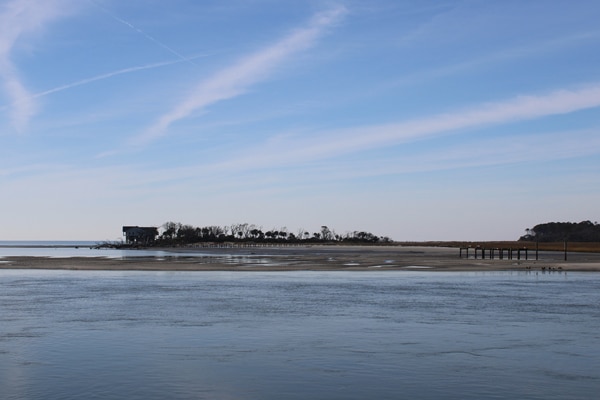
For several years, the Beaufort County Arts Council collaborated with USCB to hold an annual artist retreat on Pritchards. Each artist was required to provide a piece of art that became the Pritchards Island Collection.
That collection now hangs in the library at the Hilton Head Gateway campus. (Source: Island Packet 2015)
If you're looking for an adventure, visit Pritchards by kayak or canoe. The Fripp Island Resort offers guided canoe trips that launch off the beach behind the Cabana Club. It's a great way to safely navigate the swift current that runs through Skull Inlet and learn more about the barrier islands. Contact the Activity Center for more information and reservations.
If you're ready to head out on your own, you can check tides and head over in your kayak or canoe. Single and tandem kayaks are also available to rent at Island Excursions. Once you get to Pritchards, you'll enjoy the peace and quiet of the island while strolling, shelling and exploring.
One of Beaufort County's most nested beaches, Pritchards Island is host to Loggerhead Sea Turtles between May and October. A group of dedicated volunteers patrol the island during nesting season to protect, mark and even relocate nests when necessary. Learn more about loggerheads - they're truly amazing!
Pritchards Island is host to both shorebirds and seabirds throughout most of the year - in the summer for nesting, and as a rest and refuel layover during their epic spring and fall migrations.
Nests are laid in shallow scrapes in the sand that blend in very well to their surroundings. While raising their young in the summer, it is imperative that adult birds keep eggs and chicks shaded to prevent predation and overheating in the summer sun, like the Least Tern is doing in this photo.
With North American shorebird and seabird populations in steep decline from habitat loss, predation and human disturbance, every piece of natural habitat remaining is critical for their survival. Help us protect these birds while enjoying the beach by keeping these actions in mind:
- Walk around flocks of birds, not through them, so they can rest and feed
- Respect signage on the beach indicating where birds are nesting and/or resting
- Leash your dog near birds, because even friendly dogs look like predators to them
There's lots to learn about birds in the Lowcountry - there are hundreds of different species to be found. Thank you for helping to protect our local wildlife!
If you’ve posted up at the inlet this summer I’m sure you’ve heard this guy coming and going. He certainly makes his presence known. American Oystercatcher - Manasquan Inlet, July 2021. #oystercatcher #americanoystercatcher #birds #birdsofinstagram #best_bird_shots #best_birds_of_ig #best_birds_planet #best_birds_of_world #macro_perfection #photographyinmyframe #oceanvirals #allkindsofmagic #allkindsofnature #jshn #nj #newjersey #sharetheshore #audbonsociety #earthfocus #featured_wildlife #global_creatives #planetbirds #shorebirds #whatschirping #animal_elite #macro_brilliance #birdsonearth #birds_adored #natgeoyourshot

If you’ve posted up at the inlet this summer I’m sure you’ve heard this guy coming and going. He certainly makes his presence known. American Oystercatcher - Manasquan Inlet, July 2021. #oystercatcher #americanoystercatcher #birds #birdsofinstagram #best_bird_shots #best_birds_of_ig #best_birds_planet #best_birds_of_world #macro_perfection #photographyinmyframe #oceanvirals #allkindsofmagic #allkindsofnature #jshn #nj #newjersey #sharetheshore #audbonsociety #earthfocus #featured_wildlife #global_creatives #planetbirds #shorebirds #whatschirping #animal_elite #macro_brilliance #birdsonearth #birds_adored #natgeoyourshot
Reddish egrets are usually solitary when feeding and often maintain a certain distance from other egrets. They are quite territorial and can be seen chasing away intruders from their hunting grounds.
..
..
#reddishegret #egrets #naturehippys_ #eye_spy_birds #planetbirds #nuts_about_birds #bestoftheusa_birds #wildlifeaddicts #yourshotphotographer #best_birds_of_ig #bestbirdshots #wildlifeplanet #birdsofinstagram #birds_captures #naturebrilliance #floridaexplored #birdsonearth #birds_bees_flowers_n_trees #wildlifeonearth #sharetheshore #floridawildlife #nuts_about_wildlife #birdsphotography

Reddish egrets are usually solitary when feeding and often maintain a certain distance from other egrets. They are quite territorial and can be seen chasing away intruders from their hunting grounds.
..
..
#reddishegret #egrets #naturehippys_ #eye_spy_birds #planetbirds #nuts_about_birds #bestoftheusa_birds #wildlifeaddicts #yourshotphotographer #best_birds_of_ig #bestbirdshots #wildlifeplanet #birdsofinstagram #birds_captures #naturebrilliance #floridaexplored #birdsonearth #birds_bees_flowers_n_trees #wildlifeonearth #sharetheshore #floridawildlife #nuts_about_wildlife #birdsphotography
Wilson`s Plovers are slightly larger than several of the small plovers in the family, and they have a more southerly distribution, living on beaches along the southern Atlantic and Gulf Coasts.
Don’t forget to #ShareTheShore with this adorable plover and our other beloved coastal birds if you’re heading to the beach this summer! You can help keep them safe by giving them at least 100 feet of space so they can nest and rest. 💖
A Wilson`s Plover parent stays close to its chick on the beach. 📷: Jean Hall/Audubon Photography Awards

Wilson`s Plovers are slightly larger than several of the small plovers in the family, and they have a more southerly distribution, living on beaches along the southern Atlantic and Gulf Coasts.
Don’t forget to #ShareTheShore with this adorable plover and our other beloved coastal birds if you’re heading to the beach this summer! You can help keep them safe by giving them at least 100 feet of space so they can nest and rest. 💖
A Wilson`s Plover parent stays close to its chick on the beach. 📷: Jean Hall/Audubon Photography Awards
Newborn Least Tern struggling to get down its breakfast. Sunrise - July 2021 in theoceancounty NJ. #leasttern #audubonsociety #birds #birdsofinstagram #best_bird_shots #best_birds_of_ig #best_birds_planet #best_birds_of_world #photographyinmyframe #oceanvirals #allkindsofmagic #allkindsofnature #jshn #nj #newjersey #sharetheshore #audbonsociety #earthfocus #featured_wildlife #global_creatives #planetbirds #shorebirds #whatschirping #animal_elite #macro_perfection #macro_brilliance #birdsonearth #birds_adored #natgeo

Newborn Least Tern struggling to get down its breakfast. Sunrise - July 2021 in theoceancounty NJ. #leasttern #audubonsociety #birds #birdsofinstagram #best_bird_shots #best_birds_of_ig #best_birds_planet #best_birds_of_world #photographyinmyframe #oceanvirals #allkindsofmagic #allkindsofnature #jshn #nj #newjersey #sharetheshore #audbonsociety #earthfocus #featured_wildlife #global_creatives #planetbirds #shorebirds #whatschirping #animal_elite #macro_perfection #macro_brilliance #birdsonearth #birds_adored #natgeo
You all got a sneak peek of this pup last week, but now we can officially introduce him as Griffin!
Griffin was found on the outer coast, suffering from maternal separation and malnutrition, and arrived at the Rescue Center on May 12th. Since then, he’s been getting four meals of harbor seal milk substitute a day, and all the vitamins and medications he needs to regain his health.
Stay tuned for updates on Griffin, and please remember to keep your distance from seals resting along the shoreline so we can keep pups and moms together in the wild.
#ShareTheShore #HarborSeal #Seal #WildlifeRehab

You all got a sneak peek of this pup last week, but now we can officially introduce him as Griffin!
Griffin was found on the outer coast, suffering from maternal separation and malnutrition, and arrived at the Rescue Center on May 12th. Since then, he’s been getting four meals of harbor seal milk substitute a day, and all the vitamins and medications he needs to regain his health.
Stay tuned for updates on Griffin, and please remember to keep your distance from seals resting along the shoreline so we can keep pups and moms together in the wild.
#ShareTheShore #HarborSeal #Seal #WildlifeRehab
Roseate Spoonbill~ Platalea ajaja
••
f/4, 1/4000, ISO160, 400mm
••
#roseatespoonbill #wadingbirds #birds_captures #raw_birds #birds_nature #bird_brilliance #birdphotography #birdsofinstagram #birdsonearth #birds_perfection #nature_brilliance #planetbirds #eye_spy_birds #birdlife #birdstagram #wildplanet #bestbirdshots #best_birds_of_ig #birdsfreaks #birdselite #total_birds #InstaBirds #BirdOfTheDay #yourshotphotographer #audubonsociety #sharetheshore #sanibelisland

Roseate Spoonbill~ Platalea ajaja
••
f/4, 1/4000, ISO160, 400mm
••
#roseatespoonbill #wadingbirds #birds_captures #raw_birds #birds_nature #bird_brilliance #birdphotography #birdsofinstagram #birdsonearth #birds_perfection #nature_brilliance #planetbirds #eye_spy_birds #birdlife #birdstagram #wildplanet #bestbirdshots #best_birds_of_ig #birdsfreaks #birdselite #total_birds #InstaBirds #BirdOfTheDay #yourshotphotographer #audubonsociety #sharetheshore #sanibelisland
Yawns are contagious 🥱
#pipingplover #plover #ploverlover #shorebirds #shorebirdsofinstagram #shorebirds_habitat #birdwatching #birdwatchingphotography #birding #birdingphotography #birds #birdnerds #birdlovers #birdwatchers #birdsofinstagram #birdstagram #birdphotography #sonyrx10iv #savethebirds #bringbirdsback #birdstellus #beach #beachbirds #sharetheshore #dontbetrashy #savetheocean #saveourshores #protecttheplovers #yawn #pipl

Yawns are contagious 🥱
#pipingplover #plover #ploverlover #shorebirds #shorebirdsofinstagram #shorebirds_habitat #birdwatching #birdwatchingphotography #birding #birdingphotography #birds #birdnerds #birdlovers #birdwatchers #birdsofinstagram #birdstagram #birdphotography #sonyrx10iv #savethebirds #bringbirdsback #birdstellus #beach #beachbirds #sharetheshore #dontbetrashy #savetheocean #saveourshores #protecttheplovers #yawn #pipl
Least Tern providing shelter to its 2 day old chick earlier today. July 5, 2021. Ocean County, NJ. 🇺🇸 🐣 #leasttern #audubonsociety #birds #birdsofinstagram #best_bird_shots #best_birds_of_ig #best_birds_planet #best_birds_of_world #photographyinmyframe #oceanvirals #allkindsofmagic #allkindsofnature #jshn #nj #newjersey #sharetheshore #audbonsociety #earthfocus #featured_wildlife #global_creatives #planetbirds #zcreators #nikonz7ii #shorebirds #whatschirping #animal_elite #macro_perfection #macro_brilliance #birdsonearth #birds_adored

Least Tern providing shelter to its 2 day old chick earlier today. July 5, 2021. Ocean County, NJ. 🇺🇸 🐣 #leasttern #audubonsociety #birds #birdsofinstagram #best_bird_shots #best_birds_of_ig #best_birds_planet #best_birds_of_world #photographyinmyframe #oceanvirals #allkindsofmagic #allkindsofnature #jshn #nj #newjersey #sharetheshore #audbonsociety #earthfocus #featured_wildlife #global_creatives #planetbirds #zcreators #nikonz7ii #shorebirds #whatschirping #animal_elite #macro_perfection #macro_brilliance #birdsonearth #birds_adored
Reddish egrets ~ Egretta rufescens
..
..
..
#reddishegret #egrets #naturehippys_ #eye_spy_birds #planetbirds #nuts_about_birds #bestoftheusa_birds #wildlifeaddicts #yourshotphotographer #best_birds_of_ig #bestbirdshots #wildlifeplanet #conserveflorida #floridawildlifecorridor #birdsofinstagram #birds_captures #naturebrilliance #sonyalpha #birdsonearth #keepflwild #birds_bees_flowers_n_trees #wildlifeonearth #sharetheshore #floridawildlife #nuts_about_wildlife #birdsphotography

Reddish egrets ~ Egretta rufescens
..
..
..
#reddishegret #egrets #naturehippys_ #eye_spy_birds #planetbirds #nuts_about_birds #bestoftheusa_birds #wildlifeaddicts #yourshotphotographer #best_birds_of_ig #bestbirdshots #wildlifeplanet #conserveflorida #floridawildlifecorridor #birdsofinstagram #birds_captures #naturebrilliance #sonyalpha #birdsonearth #keepflwild #birds_bees_flowers_n_trees #wildlifeonearth #sharetheshore #floridawildlife #nuts_about_wildlife #birdsphotography
